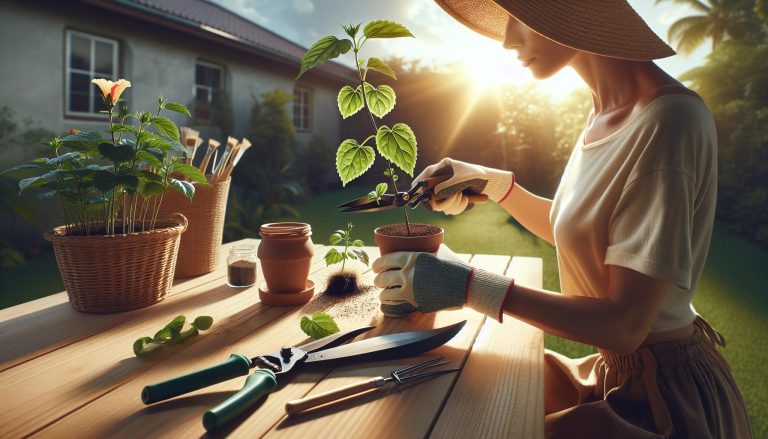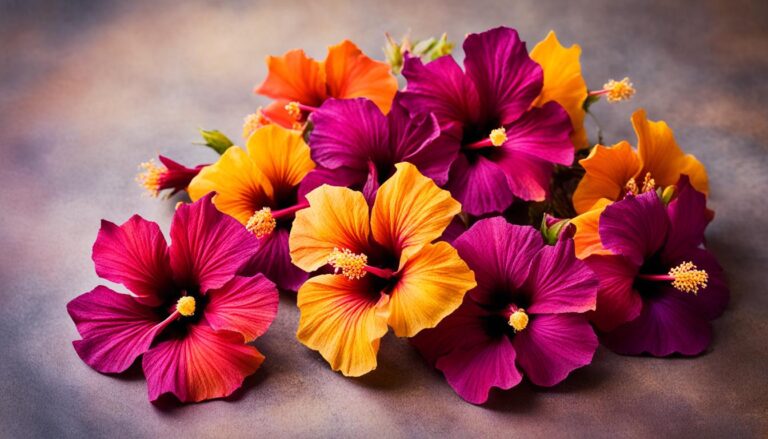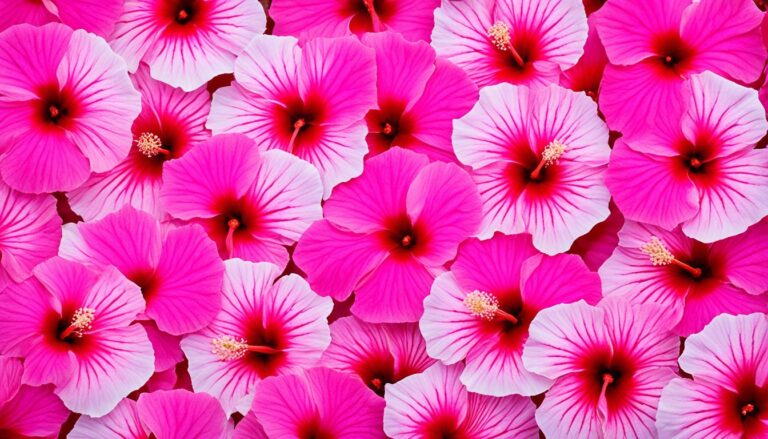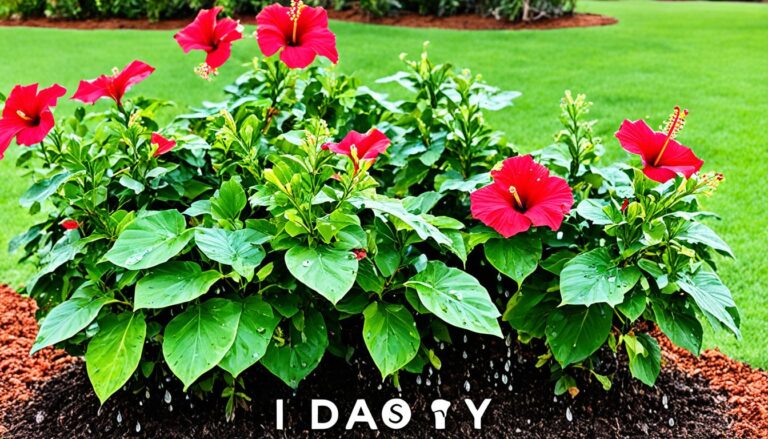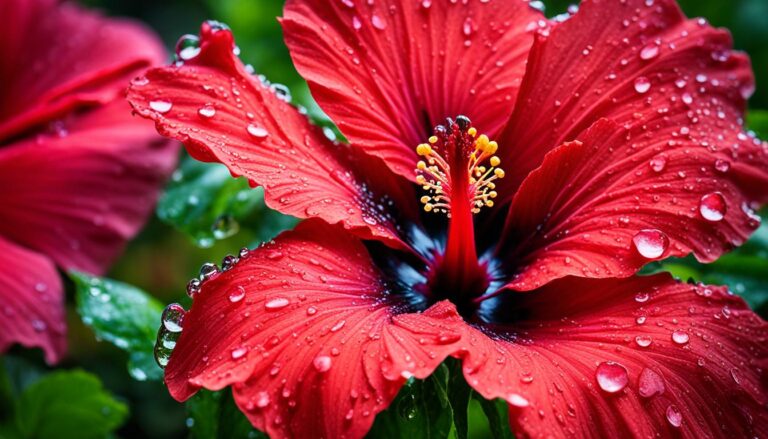Aphids on Hibiscus: 10 Natural Ways to Prevent and Control Infestations
As an avid gardener, I’ve encountered my fair share of plant pests, but few are as persistent as aphids on hibiscus. These tiny sap-sucking insects can quickly turn a vibrant, healthy hibiscus into a wilting mess. But why are hibiscus plants so susceptible to aphid infestations?
I’ve spent years studying these pesky critters and their impact on our beloved hibiscus. Did you know that a single aphid can produce up to 80 offspring in just a week? It’s no wonder they can take over a plant so quickly! In this article, I’ll share my expertise on identifying, preventing, and treating aphid infestations on hibiscus plants, ensuring your garden stays beautiful and thriving.
Understanding Aphids and Their Impact on Hibiscus Plants
Aphids are tiny, sap-sucking insects that can wreak havoc on hibiscus plants. These pests, often no larger than a pinhead, come in various colors including green, black, brown, and pink. They’re masters of reproduction, with females capable of giving birth to live young without mating.
Identifying Aphid Infestations
Spotting aphids on hibiscus isn’t always straightforward. Here’s what to look for:
- Clusters of small insects on stems, buds, and leaves
- Sticky residue (honeydew) on leaves or ground beneath the plant
- Yellowing or curling leaves
- Stunted growth or deformed flowers
I’ve learned to check the undersides of leaves regularly, as that’s where aphids often hide.
How Aphids Damage Hibiscus
Aphids harm hibiscus plants in several ways:
- Sap extraction: They pierce plant tissue and suck out vital nutrients.
- Virus transmission: Aphids can spread plant viruses as they move from one plant to another.
- Honeydew production: This sticky substance attracts ants and promotes sooty mold growth.
The Aphid Life Cycle
Understanding the aphid life cycle is crucial for effective control:
| Stage | Duration | Description |
|---|---|---|
| Egg | 3-4 days | Laid in fall, hatch in spring |
| Nymph | 7-10 days | Molts 4 times before adulthood |
| Adult | 20-40 days | Reproduces rapidly |
In favorable conditions, aphids can complete their life cycle in just 5 days, leading to rapid population growth.
Natural Predators of Aphids
Beneficial insects play a key role in controlling aphid populations:
- Ladybugs
- Lacewings
- Parasitic wasps
- Hoverflies
Encouraging these natural predators in your garden can help keep aphid numbers in check.
Impact on Plant Health
Severe aphid infestations can significantly impact hibiscus health:
- Reduced photosynthesis due to leaf damage
- Weakened immune system, making plants more susceptible to diseases
- Decreased flower production and overall plant vigor
Early detection and intervention are key to preventing long-term damage to your hibiscus plants.
Identifying Aphid Infestations on Hibiscus
Spotting aphids on hibiscus plants early is crucial for effective control. I’ve learned to recognize the telltale signs of these tiny pests through years of gardening experience.
Common Signs of Aphid Presence
- Clustered insects: Look for groups of small, pear-shaped insects on stems and leaves.
- Sticky residue: Check for a shiny, sticky substance called honeydew on leaves and nearby surfaces.
- Leaf distortion: Watch for curling, yellowing, or misshapen leaves.
- Sooty mold: Notice black, powdery fungus growing on honeydew-covered surfaces.
- Stunted growth: Observe reduced plant vigor and slower growth rates.
- Ant activity: Increased ant presence often indicates aphid infestations.
To spot these signs, inspect your hibiscus plants regularly, paying close attention to new growth and the undersides of leaves.
Types of Aphids Affecting Hibiscus
Hibiscus plants are vulnerable to several aphid species:
- Cotton aphid (Aphis gossypii)
- Color: Varies from yellow to dark green
- Size: 1-2 mm long
- Distinguishing feature: Black cornicles (tube-like structures on the rear)
- Melon aphid (Aphis gossypii)
- Color: Light green to black
- Size: 1-2 mm long
- Distinguishing feature: Often confused with cotton aphids due to similarities
- Green peach aphid (Myzus persicae)
- Color: Pale yellow to light green
- Size: 1.5-2 mm long
- Distinguishing feature: Long antennae and visible cauda (tail-like appendage)
- Potato aphid (Macrosiphum euphorbiae)
- Color: Pink or green
- Size: 2-4 mm long
- Distinguishing feature: Larger than other common aphid species
- Black citrus aphid (Toxoptera aurantii)
- Color: Dark brown to black
- Size: 1.5-2 mm long
- Distinguishing feature: Shiny appearance and preference for new growth
Identifying the specific aphid species isn’t always necessary for treatment, but it can help in selecting targeted control methods. Regular inspection and prompt action are key to protecting your hibiscus plants from aphid damage.
The Damage Caused by Aphids on Hibiscus
Aphids inflict serious harm on hibiscus plants, compromising both their appearance and health. These tiny pests can quickly multiply, leading to extensive damage if left unchecked. Let’s explore the specific ways aphids affect hibiscus plants.
Aesthetic Damage
Aphids mar the visual appeal of hibiscus plants in several ways:
- Leaf distortion: Aphids’ feeding causes leaves to curl, twist, and become misshapen
- Discoloration: Infested leaves often develop yellow or brown spots
- Stunted growth: Heavily infested plants may exhibit reduced growth or deformed buds
- Sooty mold: The sticky honeydew secreted by aphids promotes fungal growth, coating leaves with an unattractive black film
- Premature leaf drop: Severe infestations can lead to early leaf shedding
These aesthetic issues not only diminish the plant’s beauty but also signal underlying health problems.
Potential Health Risks to the Plant
Aphid infestations pose significant threats to hibiscus health:
- Nutrient depletion: Aphids suck sap, robbing the plant of essential nutrients
- Weakened immune system: Prolonged infestations compromise the plant’s ability to fight diseases
- Viral transmission: Aphids can spread harmful viruses between plants
- Reduced photosynthesis: Sooty mold blocks light, hindering the plant’s ability to produce food
- Stress: Constant feeding by aphids stresses the plant, making it more susceptible to other pests and environmental factors
Table: Impact of Aphid Infestation on Hibiscus Health
| Severity | Nutrient Loss | Growth Reduction | Disease Risk |
|---|---|---|---|
| Mild | 10-20% | 5-10% | Low |
| Moderate | 20-40% | 10-25% | Medium |
| Severe | 40-60% | 25-50% | High |
I’ve seen firsthand how quickly aphids can transform a thriving hibiscus into a struggling plant. Early detection and prompt action are key to preventing these damaging effects and maintaining the health and beauty of your hibiscus.
Natural Methods for Controlling Aphids on Hibiscus
Natural methods offer effective, eco-friendly solutions for controlling aphids on hibiscus plants. These approaches harness nature’s own defenses and organic compounds to combat infestations without harsh chemicals.
Beneficial Insects and Predators
Beneficial insects are nature’s pest control squad for hibiscus plants. Ladybugs, lacewings, and parasitic wasps feast on aphids, keeping populations in check. Here’s how to attract and use these helpful bugs:
- Plant nectar-rich flowers near hibiscus to lure beneficial insects
- Release commercially available ladybugs in the evening when plants are damp
- Encourage native predators by avoiding broad-spectrum pesticides
- Install insect houses or leave small brush piles to provide shelter
- Maintain diverse plantings to create a balanced ecosystem
I’ve found that a thriving population of beneficial insects can reduce aphid numbers by up to 90% in just a few weeks.
Homemade Organic Sprays
DIY organic sprays offer a cost-effective, natural aphid control method for hibiscus plants. These homemade solutions deter pests without harming beneficial insects:
- Neem oil spray:
- Mix 1 tablespoon neem oil with 1 teaspoon liquid soap in 1 quart of water
- Apply weekly to leaves and stems, focusing on undersides
- Garlic-pepper spray:
- Blend 2 garlic cloves and 1 hot pepper with 1 quart of water
- Strain and spray on infested areas every 3-4 days
- Soap spray:
- Combine 1 tablespoon mild liquid soap with 1 quart of water
- Spray directly on aphids, repeating every few days as needed
- Essential oil blend:
- Mix 4-5 drops each of peppermint, clove, and rosemary oils in 1 cup of water
- Spray on affected areas twice weekly
Apply these sprays in the early morning or late evening to prevent leaf burn. Always test on a small area first to ensure plant safety.
Chemical Solutions for Severe Aphid Infestations
When natural methods fall short, chemical solutions offer a potent defense against severe aphid infestations on hibiscus plants. These options provide quick and effective results, especially for large-scale or persistent problems.
Choosing the Right Insecticide
Selecting an appropriate insecticide is crucial for effective aphid control on hibiscus:
- Systemic insecticides: These are absorbed by the plant and kill aphids as they feed. Examples include imidacloprid and acephate.
- Contact insecticides: These kill aphids on direct contact. Pyrethrins and insecticidal soaps are common options.
- Neonicotinoids: Effective against aphids but use with caution due to potential impacts on beneficial insects.
- Horticultural oils: These suffocate aphids and are less harmful to beneficial insects.
When choosing, consider:
- Toxicity level
- Environmental impact
- Effectiveness against aphids
- Safety for hibiscus plants
Always read product labels carefully and follow local regulations for pesticide use.
Proper Application Techniques
Applying insecticides correctly maximizes effectiveness and minimizes risks:
- Timing: Apply early morning or late evening when temperatures are cooler.
- Coverage: Thoroughly coat all plant surfaces, including leaf undersides.
- Weather: Avoid application before rain or on windy days.
- Frequency: Follow label instructions for reapplication intervals.
- Protection: Wear gloves, long sleeves, and a mask during application.
Tips for effective application:
- Use a fine mist sprayer for even coverage
- Isolate treated plants to protect beneficial insects
- Rotate insecticides to prevent resistance
Remember, chemical solutions are a last resort. I’ve found that combining natural methods with targeted chemical use often yields the best results for hibiscus health and garden balance.
Preventing Future Aphid Infestations on Hibiscus
Keeping aphids off your hibiscus plants is easier than treating an infestation. Here are some effective prevention strategies:
- Regular inspection
- Check your hibiscus plants weekly
- Look for tiny green, yellow, or black insects
- Pay special attention to new growth and undersides of leaves
- Companion planting
- Grow aphid-repelling plants near hibiscus
- Examples: marigolds, nasturtiums, garlic, and chives
- These plants naturally deter aphids
- Healthy plant maintenance
- Water deeply and consistently
- Fertilize appropriately (not excessively)
- Prune regularly to improve air circulation
- Natural predators
- Attract beneficial insects like ladybugs and lacewings
- Plant flowers like daisies and yarrow to lure these helpful bugs
- Consider releasing purchased beneficial insects
- Physical barriers
- Use row covers or fine mesh netting
- Install these barriers during peak aphid seasons
- Remove for pollination periods
- Clean garden practices
- Remove plant debris promptly
- Dispose of infested plant material away from the garden
- Clean gardening tools regularly
- Neem oil applications
- Apply neem oil preventatively every 2-3 weeks
- Mix 1 tablespoon of neem oil per gallon of water
- Spray entire plant, including leaf undersides
- Reflective mulch
- Use silver-colored mulch around hibiscus plants
- This confuses aphids and deters them from landing
- Proper watering techniques
- Water at the base of the plant
- Avoid wetting foliage to prevent fungal growth
- Water in the morning to allow leaves to dry
- Monitor nearby plants
- Check other plants in your garden for aphids
- Treat any infestations promptly to prevent spread
By implementing these preventive measures, you’ll significantly reduce the likelihood of aphid infestations on your hibiscus. Remember, consistency is key in maintaining a healthy, aphid-free garden.
Conclusion
Dealing with aphids on hibiscus doesn’t have to be a daunting task. By implementing the strategies I’ve shared you’ll be well-equipped to protect your beautiful hibiscus plants. Remember early detection and consistent prevention are key. With a combination of natural methods and proactive care you can maintain a thriving aphid-free garden. Don’t let these tiny pests discourage you – your hibiscus can flourish with the right approach. Stay vigilant and enjoy the stunning blooms of your healthy hibiscus plants!


